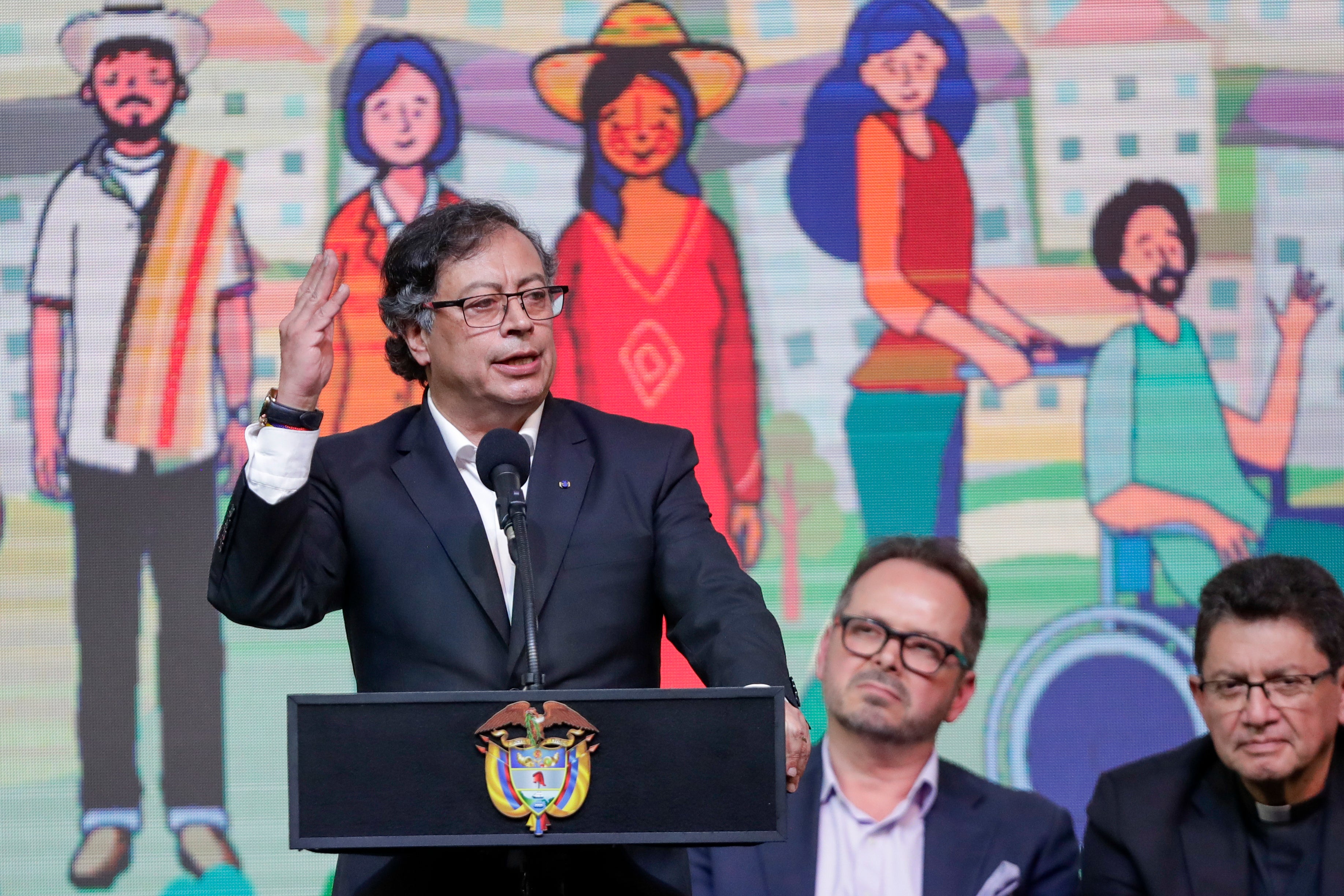Colombia extends cease-fire with FARC splinter group in bid to reduce rural violence
Colombia’s government has extended a cease-fire with the FARC-EMC rebel group that was set to expire this week, as both sides hold peace talks in Bogota that seek to reduce violence in rural parts of the country

Your support helps us to tell the story
From reproductive rights to climate change to Big Tech, The Independent is on the ground when the story is developing. Whether it's investigating the financials of Elon Musk's pro-Trump PAC or producing our latest documentary, 'The A Word', which shines a light on the American women fighting for reproductive rights, we know how important it is to parse out the facts from the messaging.
At such a critical moment in US history, we need reporters on the ground. Your donation allows us to keep sending journalists to speak to both sides of the story.
The Independent is trusted by Americans across the entire political spectrum. And unlike many other quality news outlets, we choose not to lock Americans out of our reporting and analysis with paywalls. We believe quality journalism should be available to everyone, paid for by those who can afford it.
Your support makes all the difference.Colombia’s government has extended a cease-fire with the FARC-EMC rebel group that was set to expire this week, as both sides hold peace talks in Bogota in an effort to reduce violence in rural parts of the country.
The cease-fire will now last until July 15, according to a decree signed Sunday by President Gustavo Petro, and it requires that the rebels cease attacks on civilians in areas under their control – a crucial measure according to some analysts.
“The cease-fires we have seen (during the Petro administration) so far, have really only limited the clashes between the government and the rebel groups, but haven't had a real impact on the lives of communities” said Elizabeth Dickinson, a Colombia analyst at the International Crisis Group. “What we get to see now is whether this ceasefire can change that paradigm.”
Colombia’s government in October announced peace talks with the FARC-EMC splinter group after both sides agreed to a three-month long cease-fire.
The group of around 3,500 fighters is led by rebel commanders who did not join a 2016 peace deal between the Colombian government and the main FARC group that ended five decades of war.
While homicides in Colombia have gone down since the 2016 peace deal was signed, there has been an uptick in violence in some rural pockets of the country, where groups like the FARC-EMC, the National Liberation Army and the Gulf Clan are fighting over territory abandoned by the FARC.
Petro’s administration has attempted to hold simultaneous peace talks with these groups, as part of the president's “Total Peace” plan. But critics say that cease-fires with the nation’s remaining rebel groups have done little to stop attacks on the population, with the rebels using the cessation of hostilities with the military as an opportunity to recruit teenagers, extort local businesses and kidnap civilians for hefty ransom payments – including the father of a famous soccer player.
The new cease-fire with the government also requires that the rebels not threaten community leaders or control the movements of villagers in rural areas, who are sometimes confined to their villages by the rebel groups.
The FARC-EMC and the government have disclosed few details about their current round of talks, which are being held in the nation’s capital. But they have hinted that they will discuss the implementation of economic projects aimed at transforming rural areas, where impoverished farmers have opted to grow illegal crops to make a living.
Sustainable development projects aimed at decreasing deforestation are also being discussed, according to the government's lead negotiator, Camilo González Posso.
____
Follow AP’s coverage of Latin America and the Caribbean at https://apnews.com/hub/latin-america